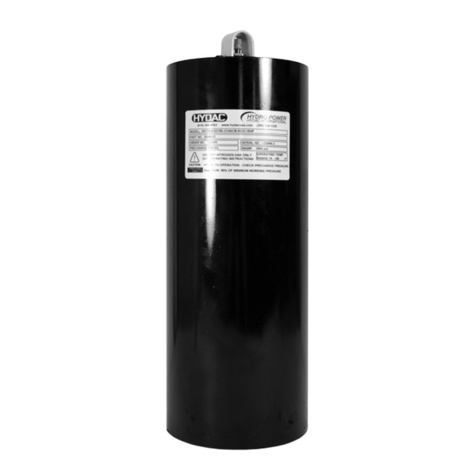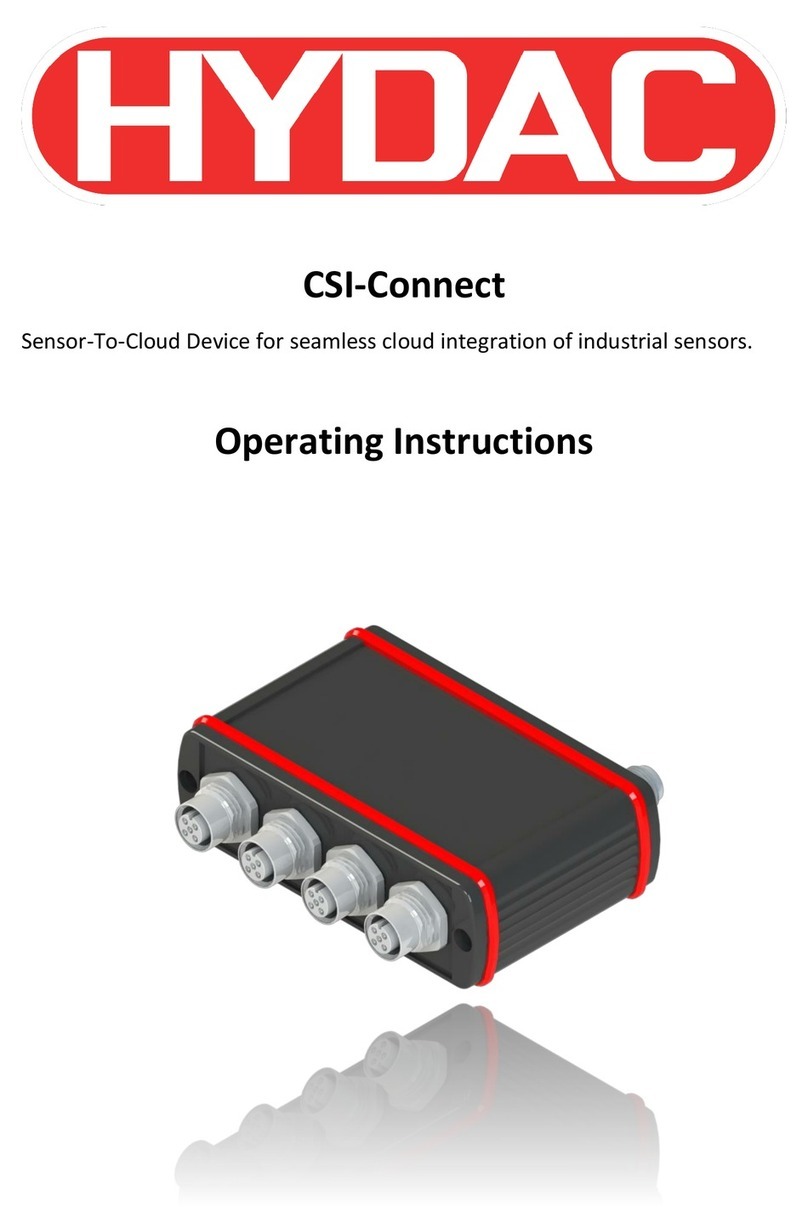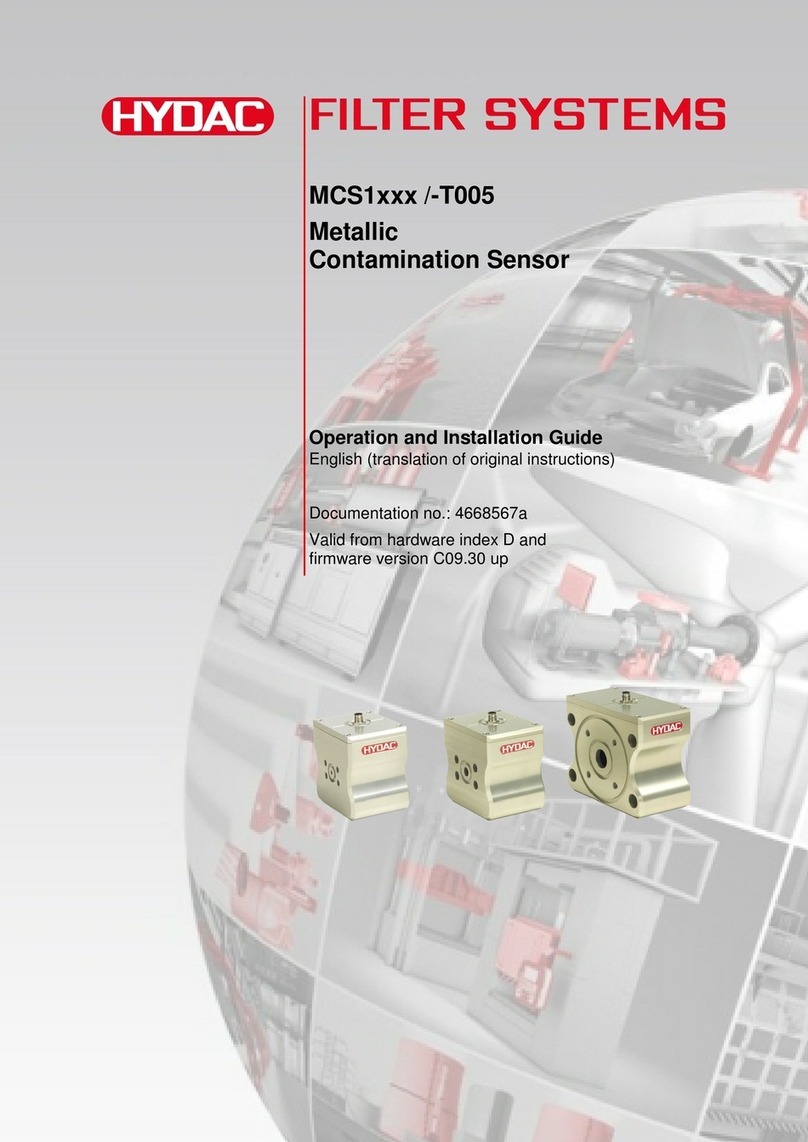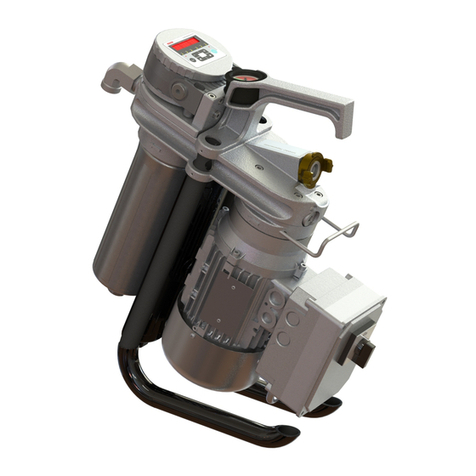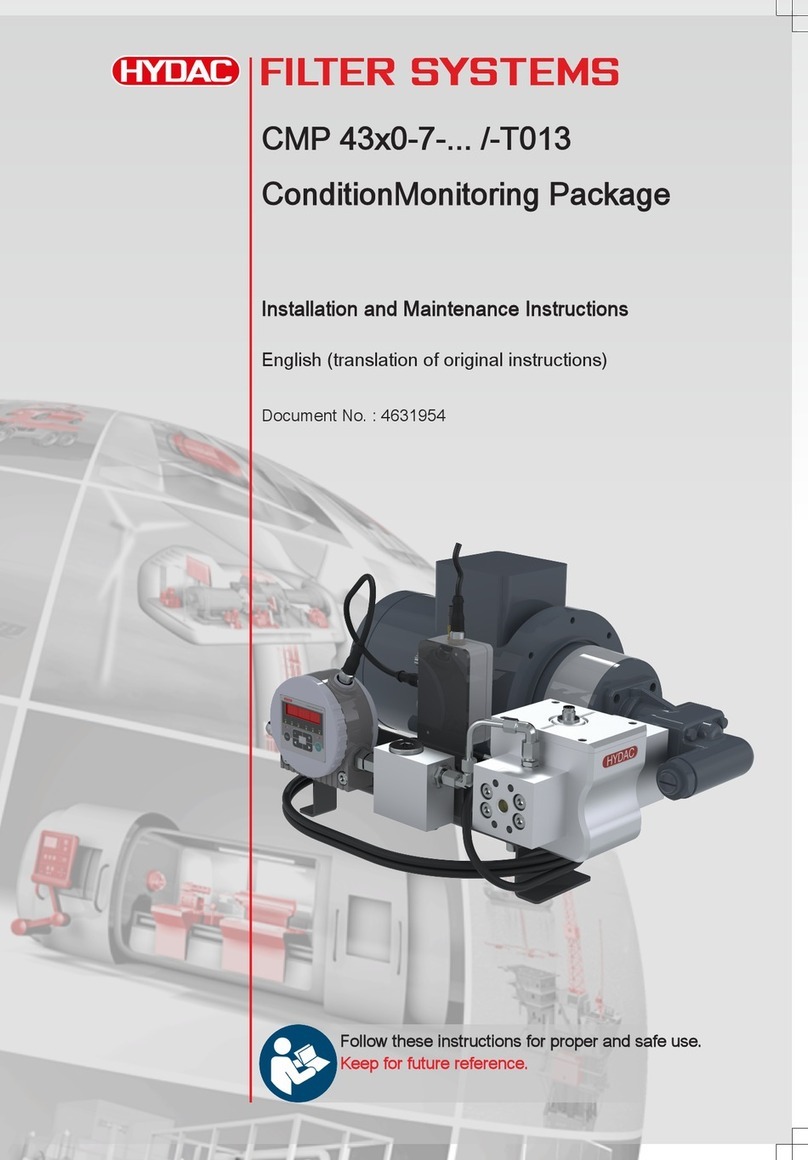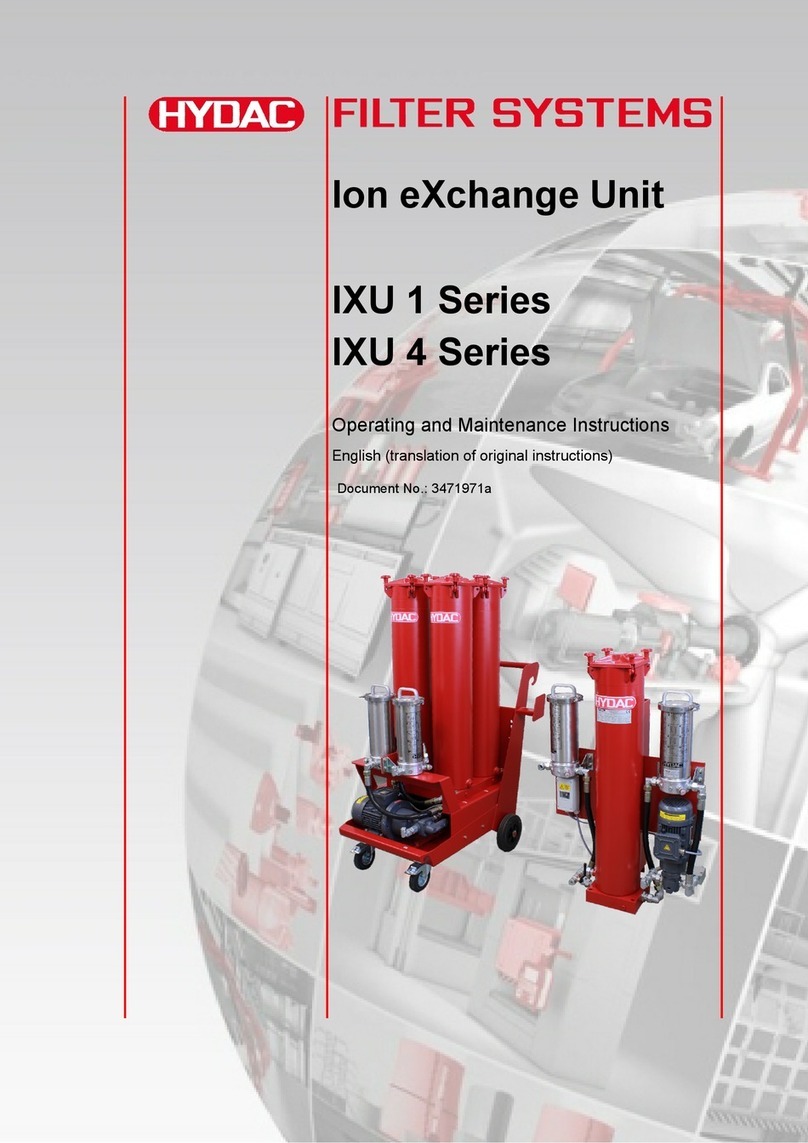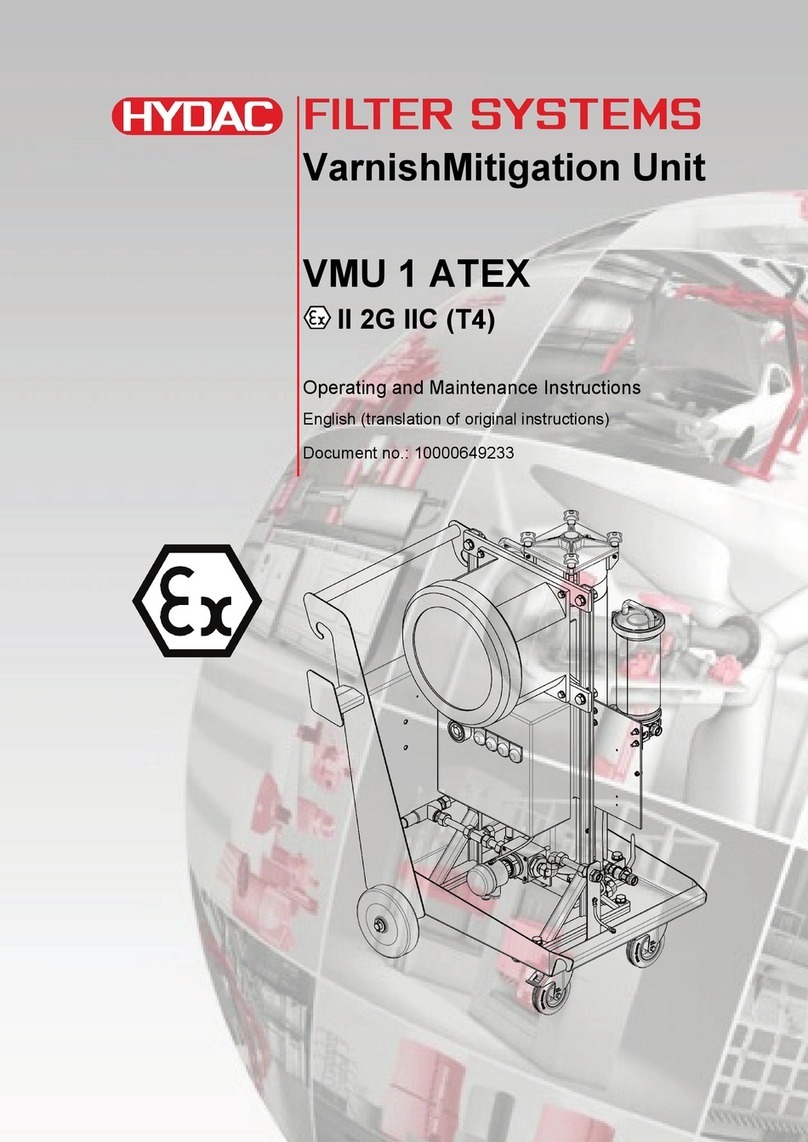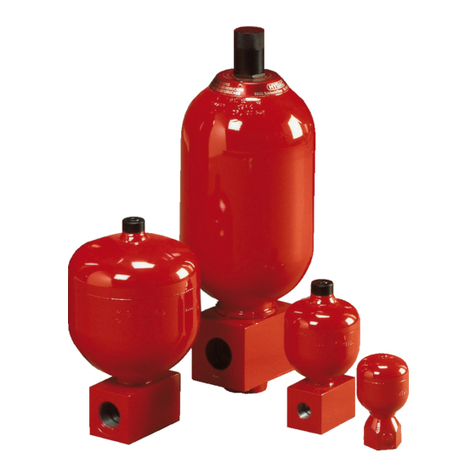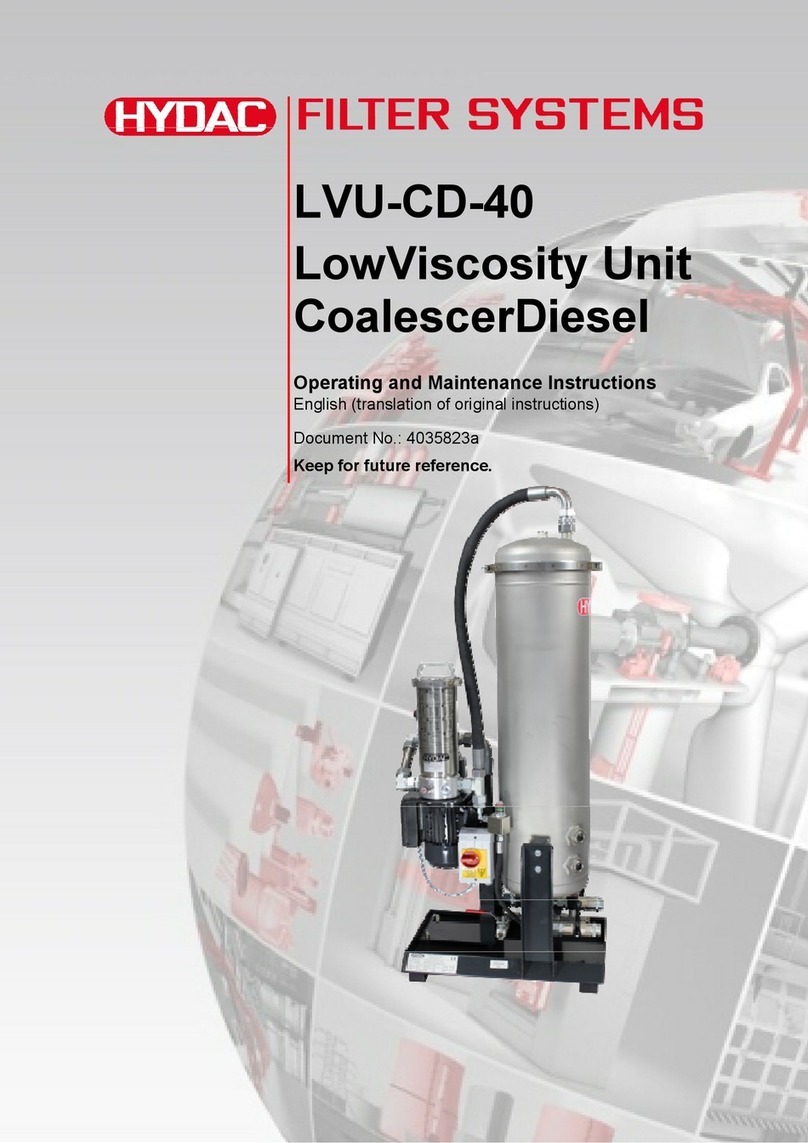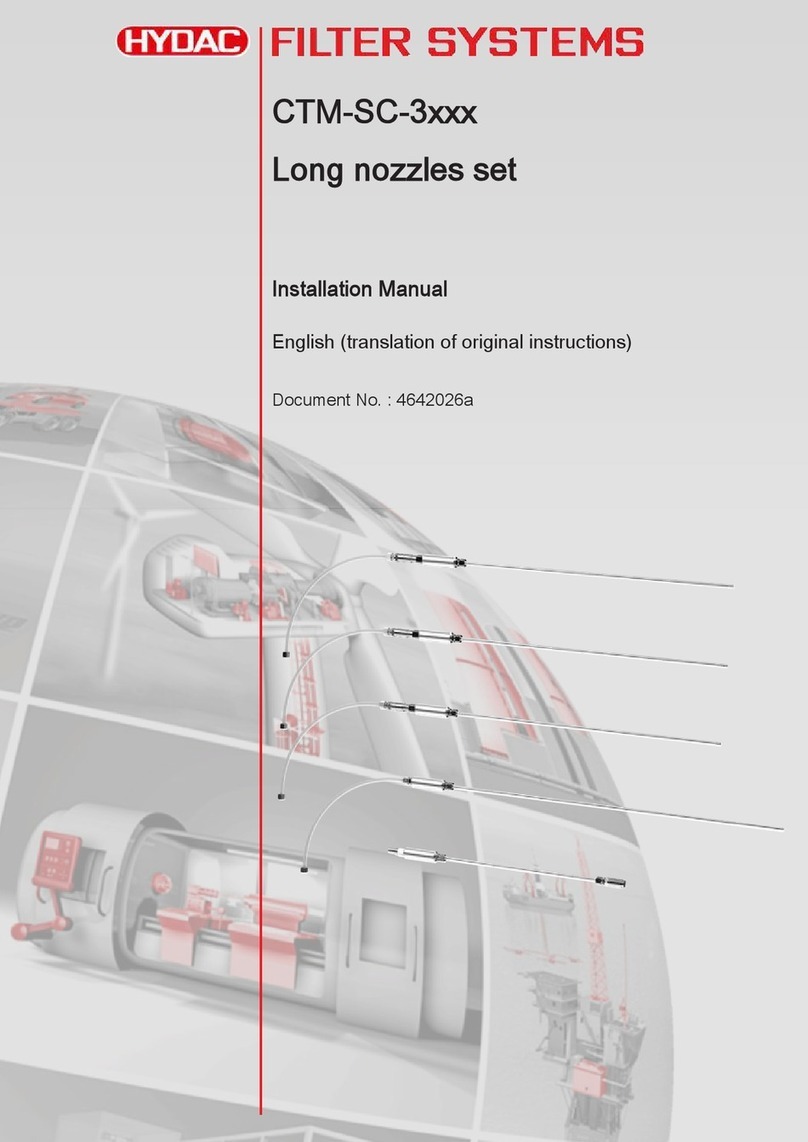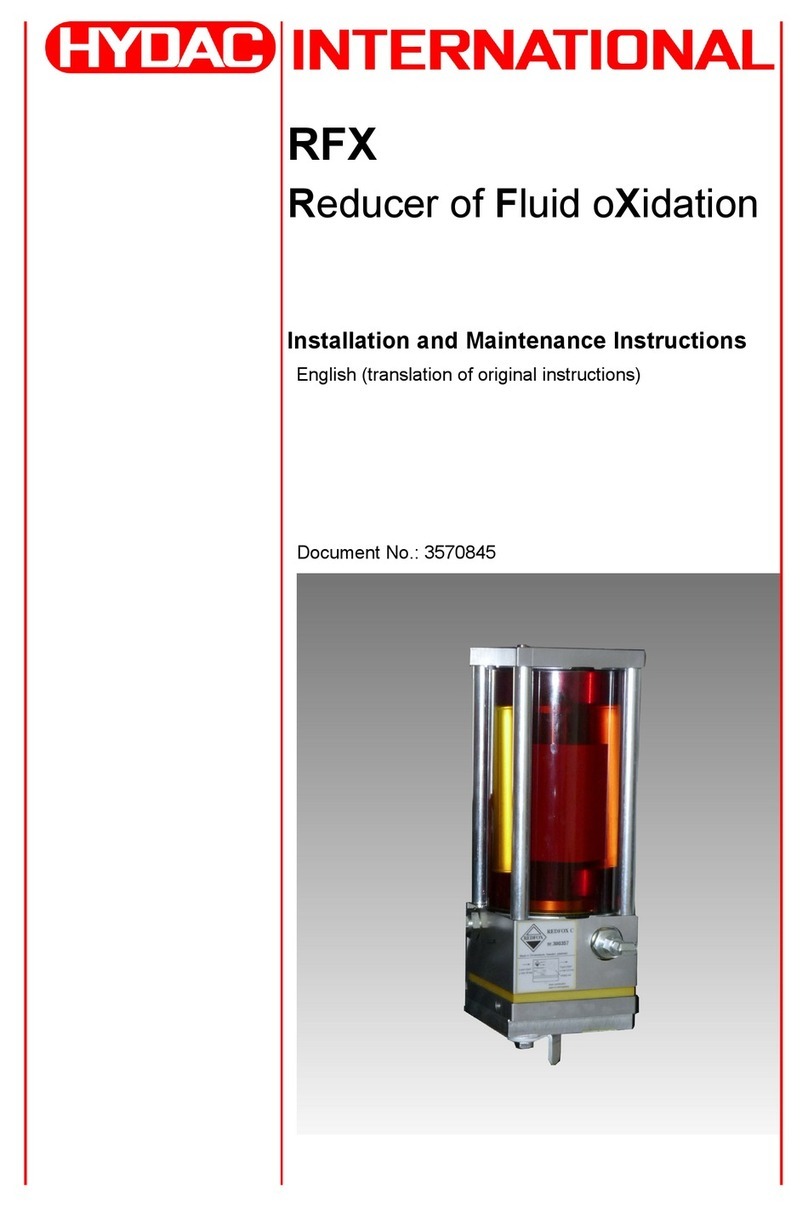
D/E/F 5.601.B.6/11.15
3
WARENZEICHEN
Die verwendeten Warenzeichen
anderer Firmen bezeichnen
ausschließlich die Produkte dieser
Firmen.
COPYRIGHT © 2006 BY
HYDAC INTERNATIONAL GMBH.
ALL RIGHTS RESERVED
Alle Rechte vorbehalten. Nachdruck
oder Vervielfältigung dieses
Handbuchs, auch in Teilen, in
welcher Form auch immer, ist
ohne ausdrückliche schriftliche
Genehmigung von HYDAC nicht
erlaubt. Zuwiderhandlungen
verpichten zu Schadenersatz.
HAFTUNGSAUSSCHLUSS
Wir haben unser Möglichstes getan,
die Richtigkeit des Inhalts dieses
Dokuments zu gewährleisten, dennoch
können Fehler nicht ausgeschlossen
werden. Deshalb übernehmen wir
keine Haftung für Fehler und Mängel
in diesem Dokument, auch nicht für
Folgeschäden, die daraus entstehen
können.
Die Angaben dieser Druckschrift
werden regelmäßig überprüft, und
notwendige Korrekturen sind in den
nachfolgenden Auagen enthalten.
Für Verbesserungsvorschläge sind wir
dankbar.
Technische Änderungen dieses
Handbuchs behalten wir uns ohne
Ankündigung vor.
TRADEMARKS
Where trademarks of other companies
are used, these relate only to those
companies' products.
COPYRIGHT © 2006 BY
HYDAC INTERNATIONAL GMBH.
ALL RIGHTS RESERVED
All rights reserved. This manual may
not be reproduced in part or whole in
whatever form without the explicit written
agreement of HYDAC. Contraventions
are liable to compensation.
EXCLUSION OF LIABILITY
We have used our best endeavours to
ensure the accuracy of the contents of
this document. However, errors cannot
be ruled out. Consequently, we accept no
liability for such errors as may exist in this
document, nor for any consequential loss.
The content of this manual is checked
regularly. Any corrections required will
be incorporated in subsequent editions.
We welcome any suggestions for
improvements.
This manual is subject to technical
modications without prior notice.
MARQUES
Les marques d'autres entreprises
utilisées ici se réfèrent exclusivement aux
produits de ces entreprises.
COPYRIGHT © 2006 BY
HYDAC INTERNATIONAL GMBH.
ALL RIGHTS RESERVED
Tous droits réservés. Toute ré-impression
ou reproduction, même partielle, de ce
manuel est interdite, sous quelque forme
que ce soit, sans l'autorisation écrite
expresse d'HYDAC. Le manquement
à cette condition donnera lieu à des
dommages - intérêts.
EXCLUSION DE GARANTIE
Nous avons fait tout notre possible pour
garantir l'exactitude des informations
contenues dans ce document.
Néanmoins, il est impossible d'exclure
une erreur. Aussi n'assumons-nous
aucune responsabilité pour les erreurs et
les déciences de ce document, ainsi que
pour les dommages consécutifs pouvant
en découler.
Les informations contenues dans ce
manuel sont régulièrement vériées et les
corrections nécessaires sont intégrées
aux éditions ultérieures. Veuillez nous
faire part de vos souhaits d'amélioration.
Nous nous réservons le droit de modier
sans préavis le contenu du présent
manuel.
